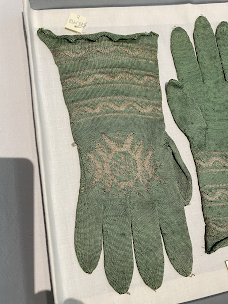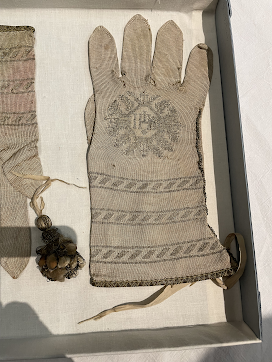Set of Gloves #2

The next set of gloves I examined is Italian, documented as early 17th century. This set is 11 1/4 inches by 5 1/2 inches. This set is made with green silk and gilt thread. I’m not sure what was used to dye the silk green, but it’s a striking change from the typical ivory/gilt gloves. On both gloves in this set, there’s a specific seam closing up the outside of the hand, hand sewn with linen thread instead of being knit in the round. For construction, the fingertips ended with a small decrease in the last half inch of the finger. It looks like the tips themselves were sewn closed with the same linen thread. Or possibly the tips were reinforced with the linen thread to handle wear and tear. The thumb construction is fascinating to me. Instead of typical (modern) glove construction which has a hole and stitches are picked up around the whole to create the thumb, this shows a distinct gusset for the base of the thumb, increasing in a wedge sh...

